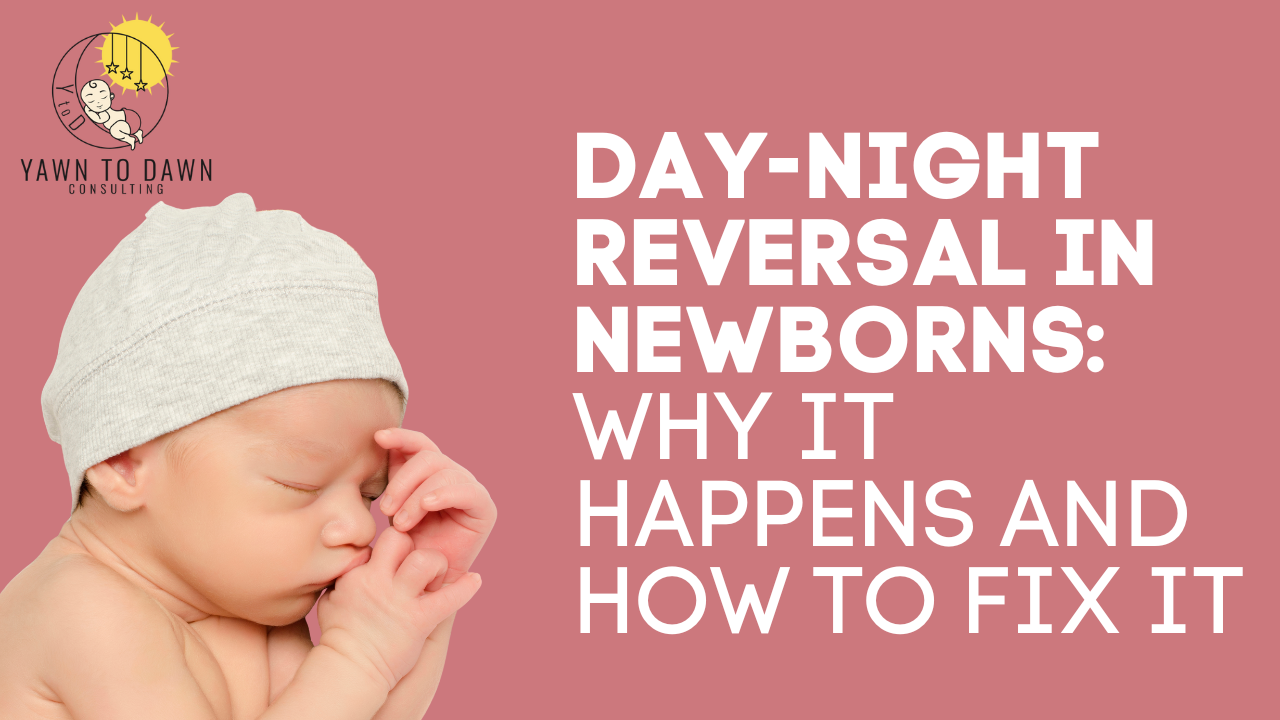Day-Night Reversal in Newborns: Why It Happens and How to Fix It
Oct 25, 2025
If your baby parties all night and naps all day you’re not imagining it.
It’s a real thing called day-night reversal, and it’s one of the most common early sleep challenges new parents face.
But don’t worry with a few gentle tweaks, you can help your baby’s body clock learn the difference between daytime energy and nighttime rest.
What Is Day-Night Reversal?
In the womb, babies are lulled to sleep by your movements during the day and tend to be more active when you’re still at night.
After birth, their internal clocks are still adjusting to life outside which is why they often sleep long stretches during the day and wake frequently at night.
The good news?
This phase is temporary, and with a few consistent cues, your baby can learn to align their rhythm with the natural 24-hour day-night cycle.
How to Help Your Baby Fix Day-Night Confusion
The primary cues that help babies differentiate between day and night are light, feeding, and activity.
Here’s what to do (and what not to do):
DO THESE
- Wake your baby at a fixed time each morning.
Choose a wake time between 7–9 am and stick to it daily.
Gently open the curtains, call your baby’s name, and let natural light fill the room. They may fuss at first but consistency is key!
- Get sunlight exposure early in the day.
Take your baby outdoors in the morning light. Sunlight helps regulate their circadian rhythm, signaling that daytime has begun.
- Feed regularly during the day.
Offer feeds every 2–3 hours to ensure your baby gets enough calories during the day, reducing the need for frequent nighttime feeds.
- Cap naps at 2 hours.
Letting your baby nap for too long during the day can push more awake time into the night. Shorter, more structured naps help set a healthy rhythm.
- Create a relaxing bedtime routine.
A consistent routine signals that night is coming. Include calming steps like a warm bath or wipe-down, gentle massage, diaper change, cozy pajamas, and a soothing feed.
AVOID THESE
- Playing or talking with your baby during night wakings.
Keep night interactions calm and minimal so your baby learns nighttime is for sleep not playtime.
- Turning on bright lights at night.
Use a dim night light instead of overhead lights during feeds or diaper changes.
- Screen exposure.
Avoid TV, phones, or any blue light near your baby at night. Blue light delays melatonin production the hormone that helps with sleep.
How Long Does It Take to Fix?
With consistent cues, most babies adjust their sleep cycles within 1–2 weeks.
Remember, you’re not “training” your baby you’re simply helping their little body learn what “day” and “night” mean in the outside world.
Want Step-by-Step Guidance?
If you’re struggling to get your newborn on a healthy sleep rhythm and want personalized support, you don’t have to do it alone.
Through Rinie’s 1:1 Sleep Support Program, you’ll get a customized plan for your baby, daily guidance, and WhatsApp support to help you confidently navigate every nap and night.
Work with Rinie one-on-one and start your journey to peaceful nights - learn more here.
Final Thoughts
Day-night confusion can be exhausting, but it’s also one of the easiest sleep issues to fix.
With a bit of sunlight, structure, and consistency, your baby will soon start sleeping longer at night and you’ll finally get that peaceful stretch of rest you deserve.
Here’s to brighter days (and quieter nights)!




